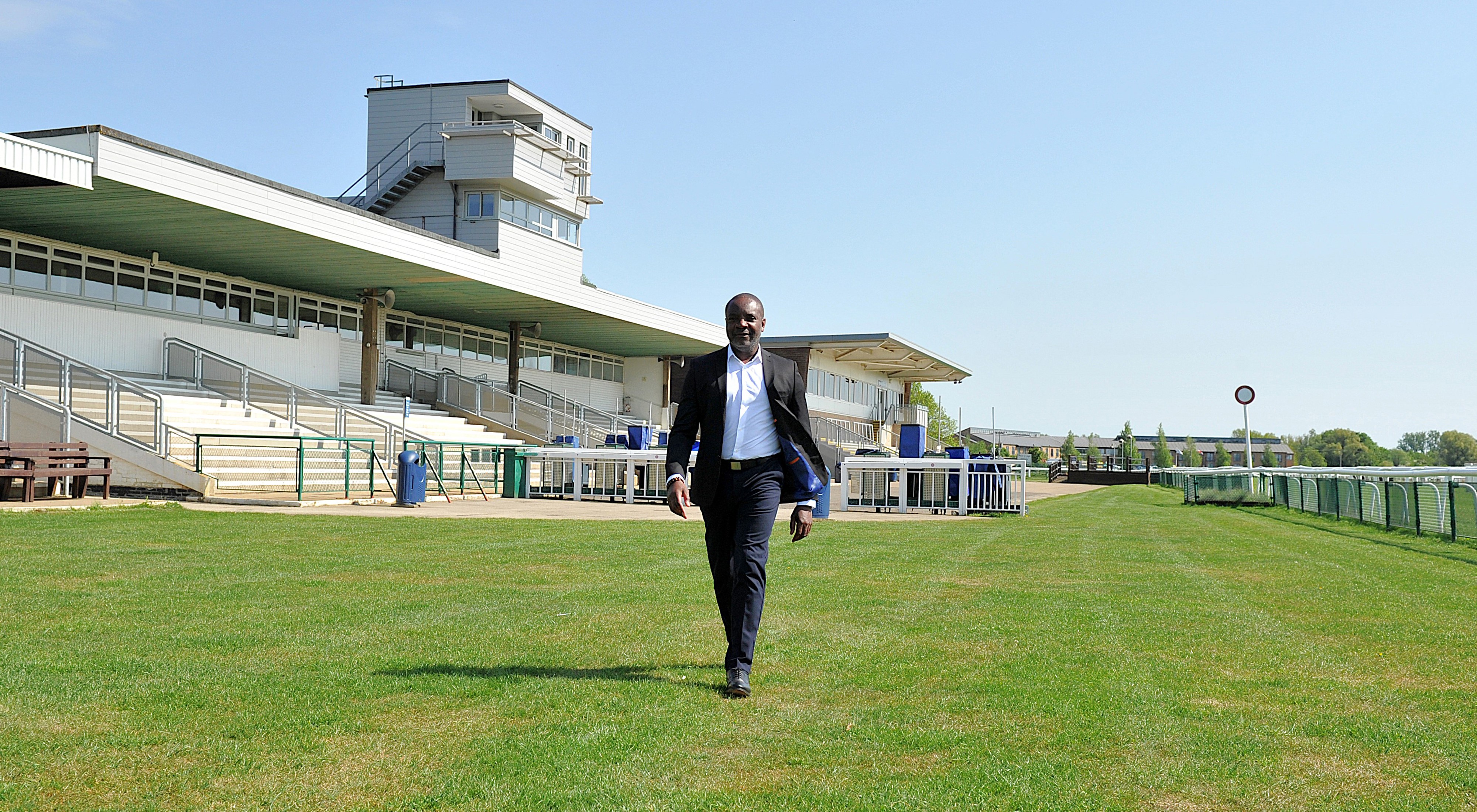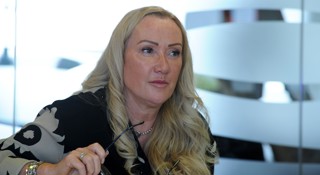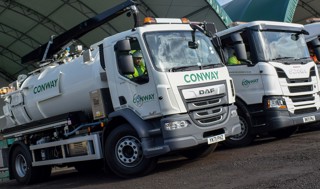Joel Dublin has fashioned a career from going into companies previously with no fleet manager and transforming the business.
A mechanic by trade working in a dealership supplemented by private work, Dublin “fell into” fleet in 2002 when responding to an advertisement for a garage mechanic at media publisher Trinity Mirror Group.
“It turned out to be more of a fleet management role with a mix of 400 cars and vans, some leased and some owned,” he said. “I had no prior experience and just picked it up as I went along, with support from the finance controller.
“But my mechanic’s knowledge helped because I could query maintenance and repair invoices to get reductions in the pricing.”
He stayed as regional fleet manager for seven years before history repeated itself with a move to medical tech provider Hill-Rom, where he became its first fleet manager.
Hill-Rom’s fleet was slightly smaller, at 200 cars and vans. But where Trinty Mirror’s vans were basic plylined boxes on wheels, Hill-Rom’s had the complexity of racking and conversions, which broadened Dublin’s knowledge and skills.
He added an additional string to his bow by taking on facilities, another new experience but one frequently attached to fleet.
From there, Dublin took almost a decade sabbatical from direct fleet management, working at Jaguar Land Rover, providing support and training to the 12,000 users of its global fleet management system, followed by turnkey transport solutions provider Penso in data controller and account management roles, before returning to fleet management at Tata Technologies.
Group fleet manager at The Jockey Club
In May 2024, he was appointed group fleet manager at The Jockey Club, which runs 15 racecourses, three training gallops and two golf clubs stretching from Carlise in Cumbria to Exeter in Devon.
Previously, the fleet had been managed by each individual racecourse, often the course clerk – yet another operation that had no fleet manager.
“It has become something of a specialism, but I like the environment where you start with a blank sheet of paper and make the role your own,” Dublin told Fleet News against the backdrop of the Huntingdon racecourse in Cambridgeshire on a gloriously sunny spring afternoon.
Dublin was recruited to create a centralised fleet function, standardising working practices and policies to improve efficiency, save money and ensure compliance.
And this was no normal fleet: among the assets are 78 tractors, 120 various types of mowers and more than 500 items of plant, from fork-lift trucks to telehandlers. Completing the fleet are 20 cars, 130 vans/pick-ups and 58 small 4x4 utility vehicles.
He reports into the procurement department to a boss who “had the vision” to recognise that a fleet of this size and complexity needed a full-time fleet manager.
The first couple of weeks was a crash course of Teams meetings with general managers and course clerks who were previously responsible for the day to day running of the assets. Each knew their pitch and kept records of the number and type of vehicles and equipment which helped Dublin to quickly build an accurate picture of the fleet.
He then cross-referenced it against the Motor Insurance Database to add and remove vehicles. That enable him to renegotiate The Jockey Club’s insurance agreement, immediately saving tens of thousands of pounds.
“The clerks had their own lists but there was no one looking at the size of the prize – each had one-fifteenth of the cake,” Dublin said. “I could immediately see the opportunities to save and do things in a better way.”

Negotiating 'huge wins' on contract terms
Standardising and renegotiating terms with manufacturer partners offered “huge wins”, with The Jockey Club able to exert its buying power by putting greater volume through fewer partners.
Dublin brought together a working group of employees who were using the vehicles and assets to understand their needs, which vary depending on the type of course – e.g. jump versus flat. Their expertise has enabled him to write robust tender documents for the tractors, vehicles and mowers.
“The most important thing is the welfare of the horses – everything we do has to be fit for purpose with them in mind,” Dublin said.
As an example, several courses, including Huntingdon, have robotic mowers that use GPS to autonomously cut the grass around the sides of the racecourse.
Dublin is scoping out a proposal to use them on the actual courses but is mindful that they are substantially lighter than the tractors currently cutting the grass which has implications for the compaction of the ground.
“Everything we do is subject to approval by the British Horseracing Association,” he added.
It’s a similar story when it comes to decarbonising the fleet.
Few electric tractors exist, but those that do are far heavier than diesel models and will, therefore, cause greater compaction of the ground which would also compromise the racecourse for the horses.
Fleet decarbonisation options
That’s not to say that The Jockey Club isn’t actively considering all options to reduce its emissions, as would be expected for an organisation that is responsible for the management and upkeep of around 8,500 acres of green land.
“We have a lot of pick-ups for our grounds team, but they only do low mileage so the DPFs (particulate filters) keep clogging up,” Dublin said. “We are looking at electric which would work for us on many levels, but there are very few options at the moment. We are also considering electric utility vehicles.
“But the robotic mowers are a good solution because they are electric and autonomous so they can cut grass 24/7, 365 days a year, apart from snow.”
Weighing around 80kgs, versus a four-tonne tractor, they are already in use at Newmarket and Huntingdon and are being trialled at Aintree and Cheltenham.
The potential savings, should the BHA approve their use on the racecourses themselves, are massive. The tractors can spend all day mowing the courses, progressively snipping millimetres from each blade on repeat circuits.
They can easily consume 100 litres of diesel per day, stopping to refuel twice via the on-site bunkers.
Ah yes, the bunkers: with capacities ranging from 2,500 to 10,000 litres, they are a vital part of the process but there are limiotations to fuel management system when it comes to measuring and controlling usage. It is something Dublin plans to look at more closely in the coming months to improve efficiency measurements and individual bunker usage.
“Ideally, I want a fob system for all but this will need considerable investment to upgrade the current structure,” he said.
Ground staff already receive a fuel card for the pick-ups and utility vehicles, which Dublin switched to Allstar due to its superior reporting and discounted fuel, although the majority of the driving takes place within the confines of the course boundaries.

Selecting the right partners and best deals
Dublin will run his tender utilising the knowledge and experience of his internal work group for the rest of the year to ensure he secures the right partners and the best deals.
The pick-ups and small 4x4 utility vehicles will be leased over five years/30,000 miles – some racecourses previously bought outright and kept for longer – while the tractors are leased through John Deere and will be over seven years.
Costing around £100,000 and acquired in three sizes, tractor mileage is measured in hours’ usage: typically 300 hours per year.
The mowers, each costing around £90,000, will also be leased, typically over five years. Dublin will be looking to halve the number of supplier partners from eight to four, each providing a particular specification type to meet individual racecourse requirements.
“Rationalising the number of supplier partners will give us significant discounts,” he said. “We will also have one standard spec for the utility vehicles, which the grounds staff use as their office to get around the course. Some, though, do not have cabs, giving them no protection in bad weather.”
Creating a uniform policy for assets offers additional advantages. Some vehicles cover further distances at certain tracks, particularly all-weather courses. Dublin could, in future, move vehicles around the regions to balance the mileage, further controlling costs.
With only a small proportion of driving taking place on public roads, The Jockey Club has a low incident rate. Those that do occur tend to be on-site low-speed reversing manoeuvres.
Bringing maintenance in house
Management of incidents is outsourced, but maintenance of the agricultural equipment is starting to be brought in-house after Dublin helped to appoint mechanical technicians at the Newmarket racecourse.
“My vision is to have regional engineers with mobile vans kitted out so they can look after the maintenance of the tractors, mowers and utility vehicles across three or four racecourses,” he said.
“Maintenance packages tend to be astronomical – a basic service can be £1,000-plus – so there are significant savings to be had.”
Dublin also has some innovative ideas to both save and make money through sponsorship. One proposal is to allow companies to sponsor some of the prominent equipment, such as the tractors, which are on permanent display during big race days.
Another, related, suggestion is to offer rental companies sponsorship opportunities to offset the cost of hiring vehicles.
“We rent cars, vans and utility vehicles mainly for festivals, typically for week-long contracts. It can be more than 30 vehicles for that week,” Dublin said.
With the new fleet policy written and awaiting sign off – which Dublin describes as “strengthening with the focus and priorities in the right place; one policy which also includes the 120 cash takers” – the entire fleet programme will take two years “to get to where I want it to be”.
He added: “Then I’ll start to look at the plant.”























Login to comment
Comments
No comments have been made yet.